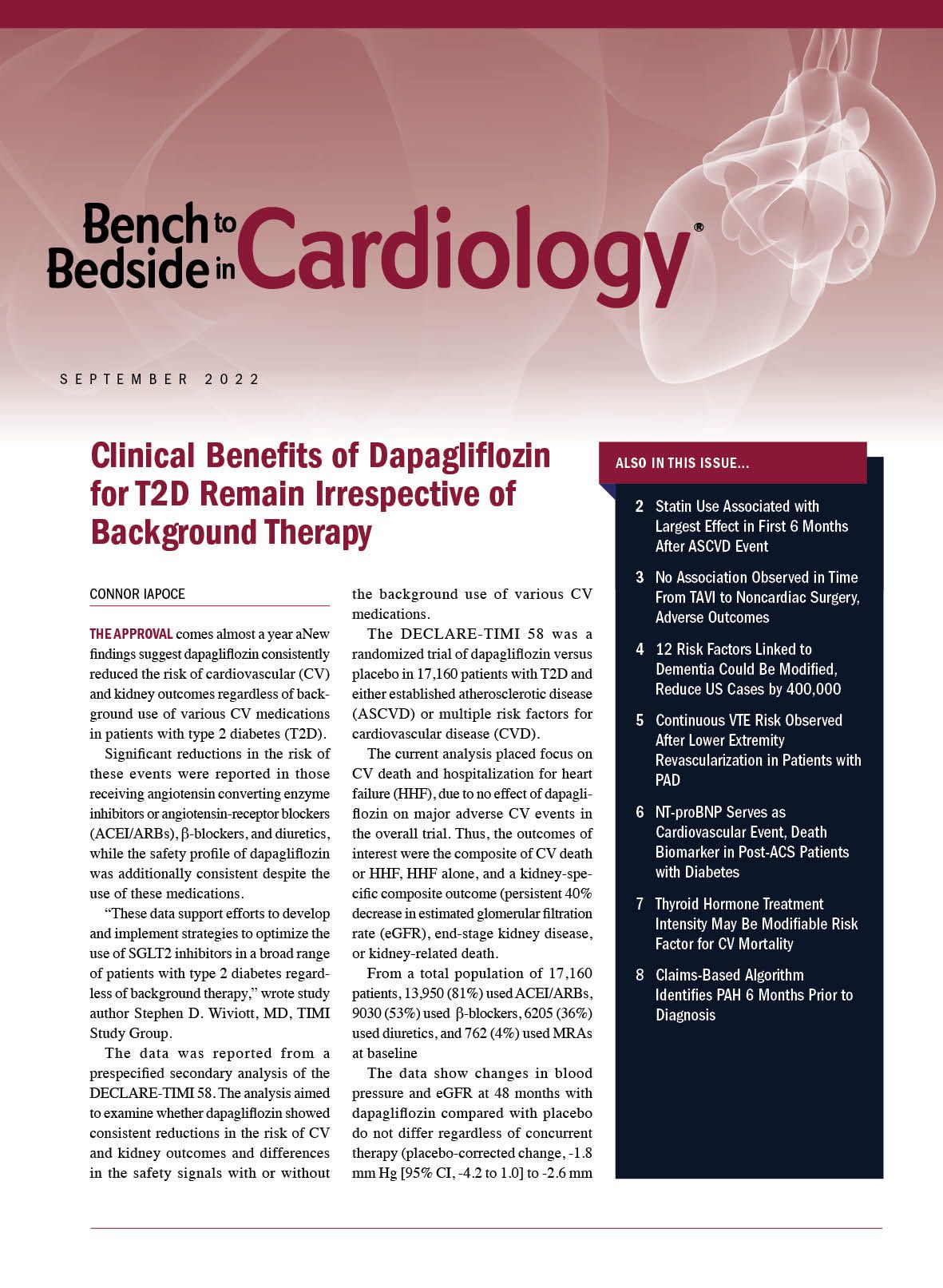Statin Use Associated with Largest Effect in First 6 Months After ASCVD Event
Nearly half of the study cohort did not fill a statin prescription within 90 days after an ASCVD event.
Kristen M. Tecson, PhD

A recent study suggested statin use resulted in the greatest impact for patients with atherosclerotic cardiovascular disease (ASCVD) in the first 6 months following an event, highlighting the importance of quick adherence to the therapy.
However, the findings from the study cohort showed that approximately half of the included patients did not fill a statin prescription within 90 days after an ASCVD event.
“Overall, statin use in this cohort was low, although the results were similar to those from a large database representative of patients with ASCVD in the US,” wrote study author Kristen M. Tecson, PhD, Baylor Heart and Vascular Institute, Baylor Scott & White Research Institute.
Lipid-lowering therapies may be a cornerstone of ASCVD prevention, but the short-term impact of medication underutilization following an acute event remains unknown. Thus, Tescon and investigators studied the association between statin use and nonuse and recurrent major adverse cardiovascular events (MACE) in a cohort of patients across the US who had a recent acute ASCVD event.
The retrospective cohort design included adults who survived an index ASCVD hospitalziation between September 2013 - September 2014, with a 1-year follow-up. Statin use was recorded 90 days before and after the index and the primary outcome was identified as MACE within 1 year of index. A multivariable extended Cox model with robust sandwich estimates was used to investigate an association between post-index statin use (assessed through prescription fill) and time-to-first recurrent MACE.
A total of 8,168 patients were included in the study. The data show there were 3,866 patients (47.33%) who filled a statin prescription in the 90 days before the index event and statin users increased to 4,152 within 90 days after index (50.83%).
Investigators noted the post-index statin users were younger with a higher amount of comorbidities than nonusers. A total of 763 events (315 of 763, 41.3% terminal) were experienced by 686 patients (8.4%) within 1 year.
The findings suggest the adjusted overall MACE risk reduction was 18% (HR, 0.82; 95% CI, 0.70 to 0.95; P = .007). Moreover, the adjusted model shows a 28% risk reduction (HR, 0.72; 95% CI, 0.60 to 0.86; P <.001).
In the multivariable model, a statin was associated with a nonsignificant 19% reduction in the number of nonfatal MACE (rate ratio, 0.81; 95% CI, 0.49 to 1.32; P = .394) and a 65% reduction in the risk of all-cause death (HR, 0.35; 95% CI, 0.22 to 0.56; P <.001).
“When jointly modeling nonfatal and fatal events, we observed that the primary benefit of statin use was protection against early death,” Tecson added.
The study, “Usefulness of Statins as Secondary Prevention Against Recurrent and Terminal Major Adverse Cardiovascular Events,” was published in The American Journal of Cardiology.
